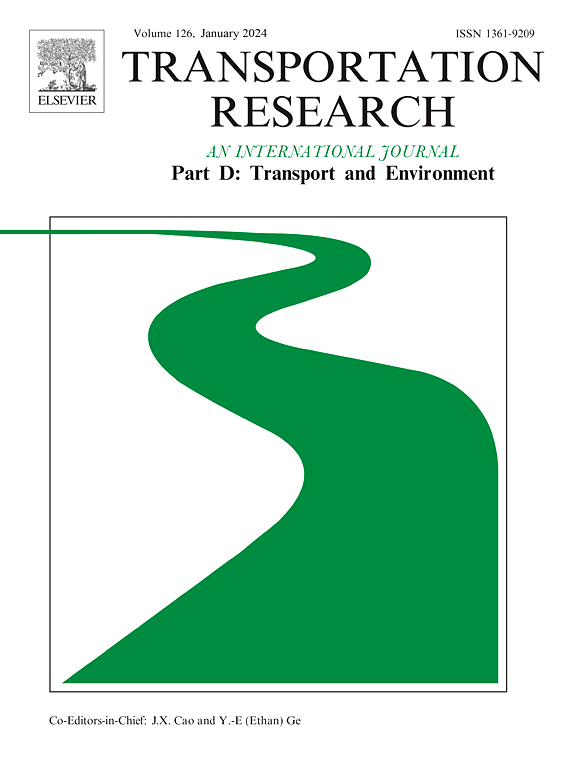评估政府硫排放政策下锚定和漂移的生态经济效益
IF 7.3
1区 工程技术
Q1 ENVIRONMENTAL STUDIES
Transportation Research Part D-transport and Environment
Pub Date : 2024-10-01
DOI:10.1016/j.trd.2024.104442
引用次数: 0
摘要
在全球硫战略的推动下,减少全球航运业的硫排放对实现应对气候变化的可持续发展目标具有重要意义。本研究探讨了政府硫排放政策对航运公司选择锚泊和漂流等系泊模式的影响。本研究构建了一个双级编程模型,并将其线性化,以最小化规划期内排放控制区的船舶排放总量和每种类型船舶的总成本。该模型的领导者是发布法规和决定锚地的部门,以规范是否必须使用船用燃气油。追随者是执行运输任务的航运公司,他们选择船只是锚泊还是漂流。此外,还进行了许多数值实验和敏感性分析,为相关决策提供了数据和理论支持。本文章由计算机程序翻译,如有差异,请以英文原文为准。
Evaluating eco-economic benefits of anchoring and drifting under government sulfur emission policies
Driven by global sulphur strategy, reducing sulfur emissions from the global shipping industry is of great significance for achieving sustainable development goals related to addressing climate change. This study explores the impact of government sulfur emission policies on the choice of mooring modes, include anchoring and drifting, for shipping lines. In this study, a bi-level programming model is constructed and linearized to minimize the total vessel emissions in emission control areas during the planning horizon and the total cost of each type of vessel. The leader of this model is the department that issues regulations and decides on the anchorage to regulate whether marine gas oil must be used. The followers are the shipping lines that execute transportation tasks and choose whether a vessel will anchor or drift. In addition, many numerical experiments and sensitivity analysis are conducted, and data and theoretical support for relevant decision-making are provided.
求助全文
通过发布文献求助,成功后即可免费获取论文全文。
去求助
来源期刊
CiteScore
14.40
自引率
9.20%
发文量
314
审稿时长
39 days
期刊介绍:
Transportation Research Part D: Transport and Environment focuses on original research exploring the environmental impacts of transportation, policy responses to these impacts, and their implications for transportation system design, planning, and management. The journal comprehensively covers the interaction between transportation and the environment, ranging from local effects on specific geographical areas to global implications such as natural resource depletion and atmospheric pollution.
We welcome research papers across all transportation modes, including maritime, air, and land transportation, assessing their environmental impacts broadly. Papers addressing both mobile aspects and transportation infrastructure are considered. The journal prioritizes empirical findings and policy responses of regulatory, planning, technical, or fiscal nature. Articles are policy-driven, accessible, and applicable to readers from diverse disciplines, emphasizing relevance and practicality. We encourage interdisciplinary submissions and welcome contributions from economically developing and advanced countries alike, reflecting our international orientation.

 求助内容:
求助内容: 应助结果提醒方式:
应助结果提醒方式:


